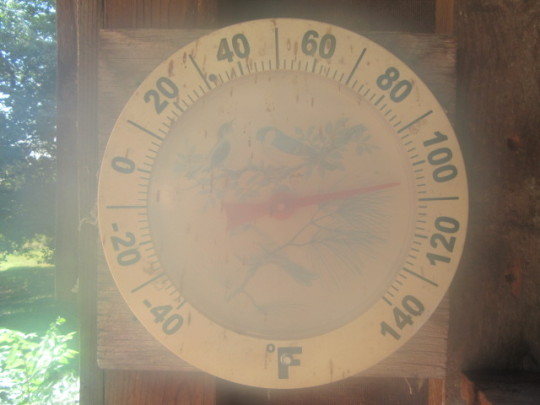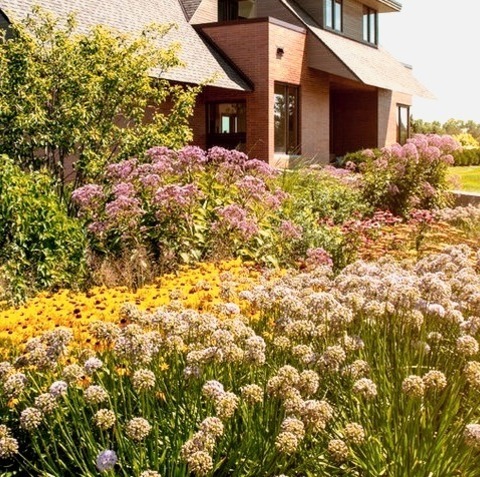#eupatoriums
Explore tagged Tumblr posts
Text



Plant of the Day
Saturday 28 September 2024
Growing on the edge of woodland by the seashore of the Black Isle, Scotland, was Eupatorium cannabinum (hemp agrimony, ague weed, hemlock parsley, hemp weed, water agrimony, water hemp). This tall, perennial plant is found in damp grassland, marshes, fens, wet woodlands and along riverbanks. The flowers are popular with pollinators and especially small tortoise shell and red admiral butterflies.
Jill Raggett
#Eupatorium#hemp agrimony#ague weed#hemlock parsley#hemp weed#water agrimony#water hemp#pink flowers#native#seashore#plants#horticulture#wildflowers#herbaceousperennial#black isle#scotland#pollinators
66 notes
·
View notes
Text

Peacock butterfly
53 notes
·
View notes
Text



Mistflower and late bonset
#landscape#landscape photography#nature#nature photography#naturecore#flowers#wildflowers#flowercore#garden#mistflower#blue mistflower#conoclinium#conoclinium coelestinum#eupatorium#eupatorium serotinum#blue boneset#boneset#late boneset#september#summer#fall#autumn#kentucky
26 notes
·
View notes
Text




#M.ZUIKO DIGITAL ED 75-300mm F4.8-6.7 II#flower#butterfly#Eupatorium japonicum#Graphium sarpedon#フジバカマ#アオスジアゲハ
10 notes
·
View notes
Text
My Garden Flowers Part 2
All photos mine. The narrow-leaved sundrops photo is edited for colour since the camera apparently can't reproduce that intense of a yellow. Neither can any Photopea editing, but at least it's closer. It's the bright of highlighter yellow but more golden.























In order of appearance:
031. Philadelphia fleabane (Erigeron philadelphicus) A welcome "weed" I couldn't find available at any of the native plant places in Ontario (one in Manitoba carried it but it wasn't available) but she planted herself.
032. Canadian Lettuce (Lactuca canadensis) Another welcome "weed" that sadly didn't manage to reseed, but maybe one will turn up again.
033-034. Jack-in-the-Pulpit male and female flowers (Arisaema triphyllum) The male has one leaf set while the female has two. The babies only have a leafset and no flowers for the first couple years of their lives. Then they reach sexual maturity as males, the next year they'll be female and switch back and forth until the end of their lives.
035. Early Meadow Rue (Thalictrum dioicum) Not pictured as she hasn't flowered yet. She's new. Hopefully next year.
036. Creeping Oregon Grape (Mahonia repens) First they gave me a non-native cinquefoil but thankfully rectified it by giving me two of these when I'd only ordered one. They've flowered before, but never so profusely as they both have this spring, and there are a number of berries ripening! They also made a baby from previous years, or else one of them suckered.
037. Three-Leaved Coneflower (Rudbeckia triloba) So...I planted her. She died. I swear she died, like root and all, she did not make the winter. Didn't come up in the spring. But now she is in several places! Managed to reseed herself? Perhaps. I don't recall that she flowered the year I planted her. Had dormant seeds in her pot with her? Coincidental present from squirrels? Either way, she's roughly in the spot I wanted her and is flowering well. Who cares how she got there?
038. Witherod Viburnum (Viburnum nudum cassinoides) Not pictured as she hasn't flowered yet. Hopefully next year!
039. Purple Milkweed (Asclepias purpurascens) Not pictured as she hasn't flowered yet. She's a new milkweed species for me! If she makes it through the summer and then the winter I should have more flowers to post in a year or two. :)
040. Rosy Pussytoes (Antennaria rosea) Not pictured as she hasn't flowered yet. Surviving, though, which is saying something because not even weeds grow there. It's a very dry spot and I've been kind of neutred from watering. But I read that she likes dry and that spot is dry. So good luck to her.
041. Prairie Alumroot (Heuchera richardsonii) Not pictured as she hasn't flowered yet. Also surviving in said very dry area.
042. Ramps (Allium tricoccum) I really hope her seeds made baby ramps! They only flower after reaching maturity at seven years, which is why it's bad when people come and uproot the lot of them. And I mean, they taste nice but not where I understand why people do that.
043. Spicebush (Lindera benzoin) My native allspice substitute! Her berries are currently developing and will be red in the fall. Still hoping to attract spicebush swallowtails one day.
044. Bigleaf Lupine (Lupinus polyphyllus) Was supposed to be sundial lupine but definitely isn't. There is disagreement between VASCAN and the USDA over whether there is a single variant of one subspecies of L. polyphyllus that's native to Ontario. This one stays in my garden until that's settled. Anyway, she's a gorgeous plant but the reason to avoid intentionally planting it in Ontario is that it easily hybridizes with sundial lupine. The hairstreak caterpillar can only eat true sundial lupine leaves. I don't know if the variant that the USDA says is native is a misidentified hybrid (bad, but also doesn't seem like it because the variant listed by the USDA is Lupinus polyphyllus ssp. polyphyllus var. polyphyllus) or just a well-behaved variant (fine, just like there's a native subspecies of Phragmites australis). But again, I'll be leaving mine in until I learn for sure, and I won't be planting sundial lupine there to avoid hybridization.
045. Sweet Joe-Pyeweed (Eupatorium purpureum) Fuzzy flowers! She can get very tall. I'm also finding out she's a slow spreader as there is an individual nearby that I didn't plant.
046. Tall Bluebells (Mertensia paniculata) She survived several years and seemed to do well, but she didn't come up this spring. I'll need to get another one and try a spot that's not quite so tough.
047. Poke Milkweed (Asclepias exaltata) Not pictured as she hasn't flowered yet. But this is her second year, so to judge by some of my other species she should do it next year!
048. Narrow-Leaved Sundrops (Oenothera fruticosa) No flowers I've seen are as intensely yellow as those in this genus, and narrow-leaved sundrops and evening primrose in particular seem to just glow.
049. Cup Plant (Silphium perfoliatum) The coolest part of this plant is in the name: the bases of her leaf stalks wrap around the flower stalk to make cups at the joints. Water settles there and birds come to drink. I haven't seen this happen yet, but I'm waiting. The flowers, however, are quite sizable, very pretty, and attract lots of bees. She gets tall like some common sunflower cultivars.
050. Canada Violet (Viola canadensis) She barely came back this year after doing well for several. I think it was just a dry winter, but the point is for them to be able to survive all seasons any year, so I'm going to try somewhere else.
051. Stinging Nettle (Urtica gracilis) I'm assuming, anyway. She planted herself in my garden at my former apartment and I potted and took her with me when I moved. She's been doing okay. And bitey. She's very bitey.
052. Zigzag Goldenrod (Solidago flexicaulis) I didn't plant that, so free native plant for me! She's also made babies.
053. Cutleaf Coneflower (Rudbeckia laciniata) Finally flowering this year!
054. Lowbush Blueberry (Vaccinium angustifolium) Not pictured as I haven't got pictures yet.
055. Highbush Blueberry (Vaccinium corymbosum) A cultivar, though I can't remember which. I try to avoid cultivars and get the wild type if I can, but it's not always possible and not all cultivars are bad.
056. Lance Selfheal (Prunella vulgaris lanceolata) Selfheal is a common garden weed but unobtrusive and makes cute purple flowers. Not to mention edible and medicinal uses! This one is the subspecies native to Ontario proper, whereas her close cousin is common up here but apparently only native to the northeastern United States bordering southern Ontario.
057. Dense Blazing Star (Liatris spicata) She's fuzzy. She's magenta purple. Bees love her. She's perfect.
058. Fairy Candle (Actaea racemosa) She's related to the baneberries and is herself poisonous but she does have some limited edible uses. And her delicate white flowerheads are lovely.
059. Star-Flowered Onion (Allium stellata) So glad I was able to get her before the place that sold her stopped shipping to my province. No one in my province carries this! But she is native, I have her, and she is an ever green plant that simply resumes growth as soon as the snow melts.
060. Wood Violet (Viola sororia) Other than V. odorata, which is invasive in North America, if you see the classic blue, purple, and white violets growing everywhere in the spring in North America it's probably this species. Yes, violets can actually be blue! Not the sky blue of forgetmenots, dayflowers, or bluebells, or the deep blue of lobelias, but blue.
#blackswallowtailbutterfly#my photos#photography#my garden#garden flowers#native plant gardening#native flowers of Carolinian Canada and USA#Erigeron philadelphicus#Lactuca canadensis#Arisaema triphyllum#Clinopodium vulgare#Mahonia repens#Rudbeckia triloba#Allium tricoccum#Lindera benzoin#Lupinus polyphyllus#Eupatorium purpureum#Mertensia paniculata#Oenothera fruticosa#Silphium perfoliatum#Viola canadensis#Urtica gracilis#Solidago flexicaulis#Rudbeckia laciniata#Vaccinium corymbosum#Prunella vulgaris lanceolata#Liatris spicata#Actaea racemosa#Allium stellata
11 notes
·
View notes
Text







Really great plants at the park today
#differential grasshopper#orange jewelweed#american senna#hairy white oldfield aster#new england aster#tall boneset#goldenrod#illinois native plant#river park#Impatiens Capensis#symphyotrichum pilosum#senna hebacarpa#symphyotrichum novae-angliae#solidago sp.#eupatorium altissimum#chicago
7 notes
·
View notes
Text

8 notes
·
View notes
Video
Parantica sita by hirorin 2013
#植物#生物#コバノフジバカマ#公#草花#Eupatorium fortunei#Parantica sita#The Hiroshima Botanical Garden#flower#insect#アサギマダラ#公園・農園#広島市植物公園#昆虫#蝶#flickr
2 notes
·
View notes
Text
서양등골나물
Eupatorium rugosum Houtt.




1 note
·
View note
Video
n456_w1150 by Biodiversity Heritage Library Via Flickr: Die Giftpflanzen Deutschlands. Braunschweig,F. Vieweg,1910. biodiversitylibrary.org/page/13489451
#Germany#Poisonous plants#New York Botanical Garden#LuEsther T. Mertz Library#bhl:page=13489451#dc:identifier=https://biodiversitylibrary.org/page/13489451#flickr#botanical illustration#scientific illustration#Wasserdost#Hemp-agrimony#Eupatorium cannabinum#holy rope#cottagecore#flowercore
1 note
·
View note
Photo

Contemporary Landscape - Front Yard An example of a large contemporary drought-tolerant and full sun front yard stone garden path in summer.
0 notes
Text
Wildflower Walk ?
Hello everyone! I hope this post finds you all well. I apologize for not posting for a while. It has been a weird summer for sure with the heat and drought. I was busy with the garden picking sweet corn and green beans right up until August 17. Somehow I managed to get 455 ears of sweet corn in the freezer, and thanks to the ‘Provider’ green beans, 34 quarts of green beans. Of course, not all the…

View On WordPress
#Ambrosia bidentata (Lanceleaf Ragweed)#Asclepias hirtella (Prairie/Tall Green Milkweed)#Asclepias syriaca (Common Milkweed)#Bidens aristosa (Tickseed Sunflower or Bearded Beggarticks)#Datura stramonium (Jimson Weed)#Elephantopus carolinianus (Leafy Elephant&039;s Foot)#Erechtites hieraciifolius (Fireweed/Pilewort)#Erigeron annuus (Annual or Daisy Fleabane)#Etc.)#Eupatorium serotinum (Late Boneset)#Impatiens capensis (Jewelweed)#Lespedeza cuneata (Chinese Bushclover)#Persicaria hydropiper (Water Pepper)#Persicaria pensylvanica (Pinkweed)#Phytolacca americana (American Pokeweed)#roton capitatus (Hogwort/Woolly Croton/Goatweed)#Rudbeckia hirta (Black-Eyed Susan)#Sida spinosa (Prickly Fanpetals)#Solanum sarrachoides (Hairy Nightshade)#Solidago sp. (Goldenrod)#Symphyotrichum lateriflorum (Calico Aster)#Tridens flavus (Purpletop#Tripsacum dactyloides (Eastern Gamagrass)#Verbesina virginica (White Crownbeard/Frostweed)#Vernonia missurica (Missouri Ironweed)
0 notes
Photo

Milwaukee Front Yard Gravel Ideas for a sizable modern gravel garden path that can withstand drought and receives plenty of summer sun.
0 notes
Text
Front Yard Gravel in Milwaukee

Ideas for a sizable modern gravel garden path that can withstand drought and receives plenty of summer sun.
0 notes
Text

0 notes
Text

Bombus on Eupatorium fistulosum / Bumblebees on Hollow Joe-Pye Weed at the Juniper Level Botanical Gardens in Raleigh, NC
#Bombus#Eupatorium fistulosum#Eupatorium#Hollow Joe-Pye Weed#Trumpetweed#Purple thoroughwort#Joe-Pye Weed#Native plants#Native flowers#Native insects#Native pollinators#Nature photography#Flowers#Juniper Level Botanical Gardens#Raleigh NC#Raleigh#North Carolina#Bumblebee#Bumblebees
0 notes